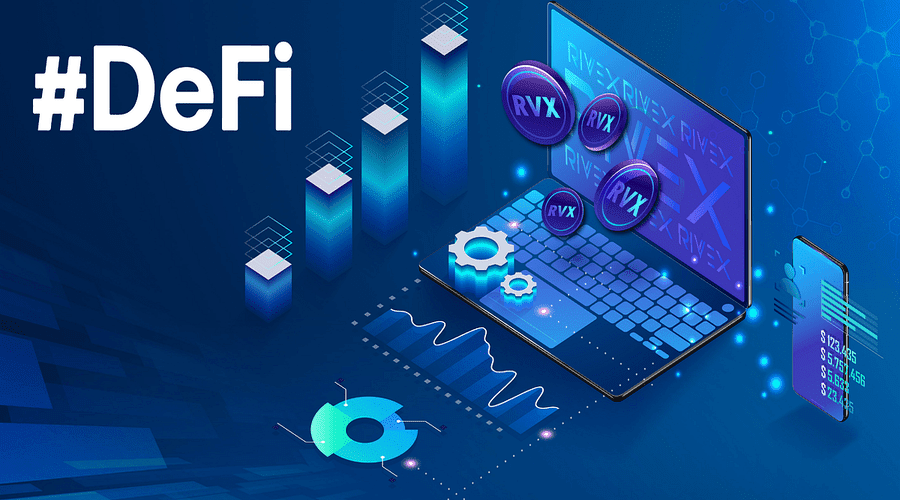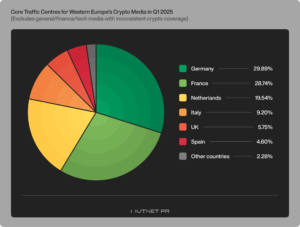Exploring Different Types of DeFi Lending Protocols

Exploring Different Types of DeFi Lending Protocols
Decentralized finance (DeFi) has emerged as a groundbreaking innovation that revolutionizes the traditional financial landscape. Among the various components of DeFi, lending protocols play a crucial role in facilitating borrowing and lending activities in a decentralized manner. In this article, we will explore the different types of DeFi lending protocols, their mechanisms, benefits, risks, and the future prospects of this rapidly growing sector.
Introduction to DeFi Lending Protocols
DeFi lending protocols are blockchain-based platforms that enable users to lend and borrow cryptocurrencies without intermediaries. These protocols operate on smart contracts, allowing for secure, transparent, and automated lending processes. By eliminating the need for traditional financial institutions, DeFi lending protocols offer users greater control over their assets and the opportunity to earn passive income through lending.
Understanding Decentralized Finance (DeFi)
Decentralized finance, often referred to as DeFi, is a system that aims to recreate traditional financial instruments and services using blockchain technology. Unlike traditional finance, which relies on centralized intermediaries such as banks, DeFi leverages smart contracts on decentralized networks like Ethereum to create open, permissionless, and inclusive financial solutions.
The rise of DeFi Lending
DeFi lending has gained significant traction in recent years due to its numerous advantages over traditional lending systems. It offers improved accessibility, lower fees, faster transactions, and increased transparency. Additionally, DeFi lending protocols provide opportunities for individuals to earn interest on their idle assets by supplying them to borrowers in need.
Exploring the Different Types of DeFi Lending Protocols
Collateralized Lending Protocols
Collateralized lending protocols require borrowers to provide collateral in the form of crypto assets to secure their loans. The value of the collateral determines the borrowing capacity, and borrowers risk losing their collateral if they fail to repay the loan. Examples of popular collateralized lending protocols include MakerDAO and Aave.
Money Market Protocols
Money market protocols operate similarly to traditional money markets, allowing users to deposit their crypto assets and earn interest. These protocols use supply and demand dynamics to determine interest rates and allocate borrowed funds to users seeking to borrow. Compound and dYdX are well-known money market protocols in the DeFi space.
Peer-to-peer Lending Protocols
Peer-to-peer (P2P) lending protocols connect lenders directly with borrowers without the need for intermediaries. These protocols utilize smart contracts to enforce loan agreements and handle repayments. They provide opportunities for lenders to earn interest while enabling borrowers to access funds quickly. Notable P2P lending protocols include Cream Finance and Uniswap’s lending pools.
Algorithmic Lending Protocols
Algorithmic lending protocols leverage algorithms and automated mechanisms to determine interest rates and provide lending services. These protocols dynamically adjust interest rates based on supply and demand conditions, ensuring efficient allocation of capital. Compound and Venus are examples of algorithmic lending protocols that have gained popularity.
Collateralized Lending Protocols in Detail
How Collateralized Lending Works
Collateralized lending protocols require borrowers to lock up a specific amount of crypto assets as collateral to secure a loan. The value of the collateral is usually higher than the borrowed amount, creating a margin of safety for lenders. If the borrower fails to repay the loan within the specified terms, the collateral is liquidated to cover the outstanding debt.
Examples of Popular Collateralized Lending Protocols
MakerDAO, one of the pioneering DeFi projects, operates a collateralized lending protocol called the Maker Protocol. It utilizes its native stablecoin, DAI, which is backed by overcollateralized crypto assets. Aave is another popular collateralized lending protocol that allows users to deposit various cryptocurrencies as collateral and borrow against them.

Money Market Protocols in Detail
How money market protocols work
Money market protocols enable users to supply their idle crypto assets to the market, which in turn allows borrowers to borrow these assets against interest. The interest rates are determined based on the supply and demand dynamics of the market. Users can lend their assets to earn interest or borrow assets by providing collateral.
Examples of Popular Money Market Protocols
Compound is a prominent money market protocol that supports various cryptocurrencies. It employs an algorithmic mechanism to determine interest rates and enables users to lend or borrow assets. dYdX is another well-known money market protocol that offers margin trading and perpetual contracts, in addition to lending and borrowing functionalities.
Peer-to-peer Lending Protocols in Detail
Peer-to-peer lending protocols connect lenders directly with borrowers, removing the need for intermediaries. Lenders can supply their assets to the lending pool, where borrowers can access them by providing collateral. Interest rates are determined by market dynamics and the availability of lenders and borrowers.
Examples of Popular Peer-to-peer Lending Protocols
Cream Finance is a decentralized lending protocol that allows users to lend and borrow various crypto assets. It operates as part of the Compound ecosystem and offers competitive interest rates. Uniswap, a popular decentralized exchange, also provides lending pools where users can lend their assets and earn interest.
Algorithmic Lending Protocols in Detail
How Algorithmic Lending Protocols Work
Algorithmic lending protocols employ algorithms and automated mechanisms to determine interest rates based on the demand and supply of assets. These protocols aim to provide efficient capital allocation and ensure stable interest rates over time. Users can lend their assets to earn interest or borrow against their collateral.
Algorithmic lending protocols utilize algorithms and automated mechanisms to determine interest rates and allocate lending services. These protocols dynamically adjust interest rates based on supply and demand conditions, ensuring efficient capital allocation and stability. Users can lend their assets and borrowers can access funds based on these algorithmic calculations.
Examples of Popular Algorithmic Lending Protocols
Compound, a versatile DeFi lending platform, operates as an algorithmic lending protocol. It dynamically adjusts interest rates based on the utilization rates of each asset. Venus is another algorithmic lending protocol that operates on the Binance Smart Chain, allowing users to lend and borrow various cryptocurrencies.
Benefits and Risks of DeFi Lending Protocols
Benefits of DeFi Lending
DeFi lending protocols offer several advantages, including:
- Greater accessibility to financial services
- Lower fees compared to traditional finance
- Transparency and immutability of transactions
- Automated processes and smart contract security
- Potential for higher interest rates on lending
Risks Associated with DeFi Lending
However, it’s crucial to be aware of the risks involved in DeFi lending:
- Smart contract vulnerabilities and hacking risks
- Market volatility and price fluctuations
- Potential liquidation of collateral
- Regulatory uncertainties and lack of investor protections
The Future of DeFi Lending Protocols
The DeFi lending sector is experiencing rapid growth and innovation. As the industry matures, we can expect to see advancements in scalability, interoperability, and risk management. With increased adoption and integration with traditional finance, DeFi lending protocols have the potential to disrupt the lending landscape and provide inclusive financial services to a broader audience.
The future of DeFi lending protocols looks promising and full of potential. As the decentralized finance ecosystem continues to evolve, these protocols are expected to play a vital role in shaping the financial landscape. With advancements in technology, scalability, and interoperability, DeFi lending protocols are likely to become more efficient, secure, and user-friendly. We can anticipate the integration of DeFi lending with traditional financial systems, enabling seamless cross-chain transactions and enhanced liquidity. Moreover, improved risk management solutions and regulatory clarity will help establish trust and attract a wider range of participants. As DeFi gains mainstream adoption, DeFi lending protocols have the potential to empower individuals worldwide by providing them with equal access to financial services and opportunities. Exciting innovations and collaborations lie ahead, paving the way for a decentralized and inclusive financial future.
Conclusion
DeFi lending protocols have revolutionized the financial industry by enabling decentralized borrowing and lending activities. Collateralized lending, money market protocols, peer-to-peer lending, and algorithmic lending are the key categories of DeFi lending protocols. Each type offers unique features and benefits, allowing users to participate in lending and borrowing with ease. However, it’s essential to understand the risks associated with DeFi lending and conduct thorough research before engaging with these protocols.
FAQs
FAQ 1: Are DeFi lending protocols safe?
DeFi lending protocols have inherent risks, including smart contract vulnerabilities and market volatility. It’s important to conduct due diligence, understand the protocols’ mechanisms, and assess the security measures in place before participating.
FAQ 2: How can I choose the right DeFi lending protocol?
When selecting a DeFi lending protocol, consider factors such as security audits, user reviews, tokenomics, interest rates, available assets, and the reputation of the protocol within the community. It’s advisable to start with well-established and reputable protocols.
FAQ 3: What are the minimum requirements for borrowing on DeFi lending protocols?
The minimum requirements for borrowing vary depending on the protocol. Typically, borrowers need to provide collateral that meets a specified minimum value, undergo identity verification, and follow any additional protocol-specific requirements.
FAQ 4: Can I earn interest on my crypto assets through DeFi lending protocols?
Yes, by supplying your crypto assets to lending pools or protocols, you can earn interest on your holdings. The interest rates are typically determined by supply and demand dynamics within the protocol.
FAQ 5: Are there any regulations for DeFi lending protocols?
DeFi lending operates in a relatively unregulated space. However, regulatory frameworks are evolving, and it’s essential to stay updated on any developments or guidelines that may apply to DeFi lending activities in your jurisdiction.

I have been in the industry for over 5 years. I know all the latest news and what is going on with different coins. I write about Bitcoin, Ethereum, Litecoin, and more.







